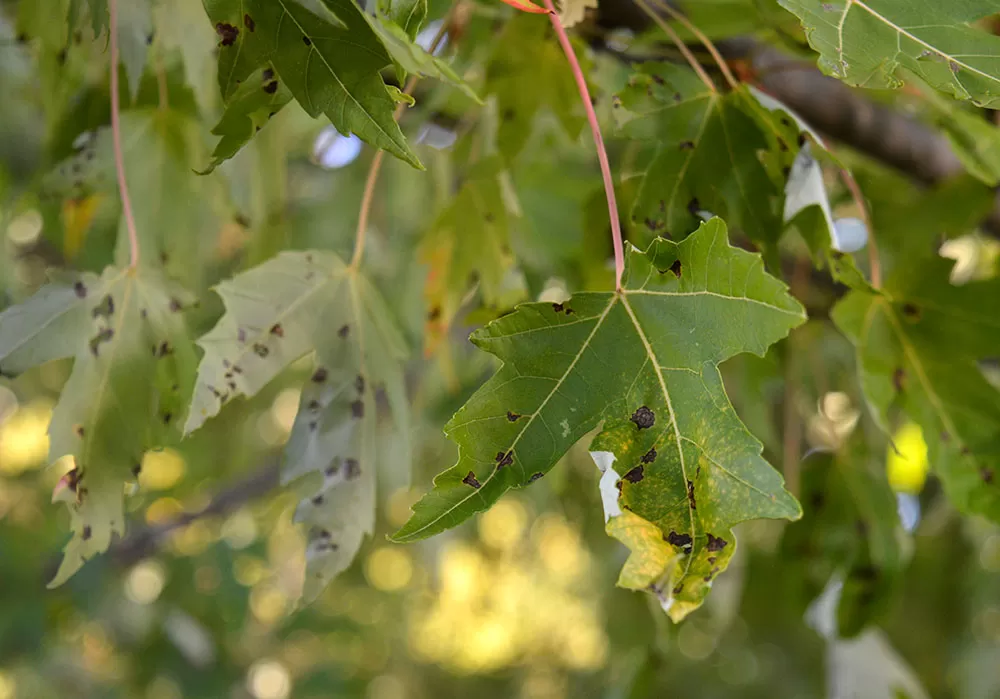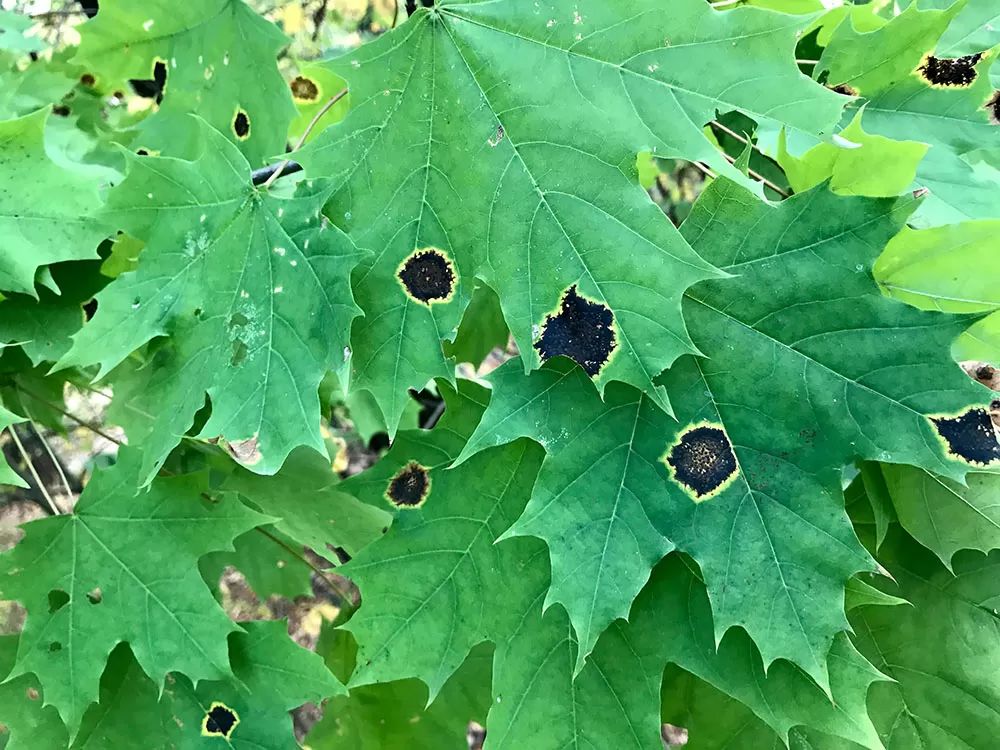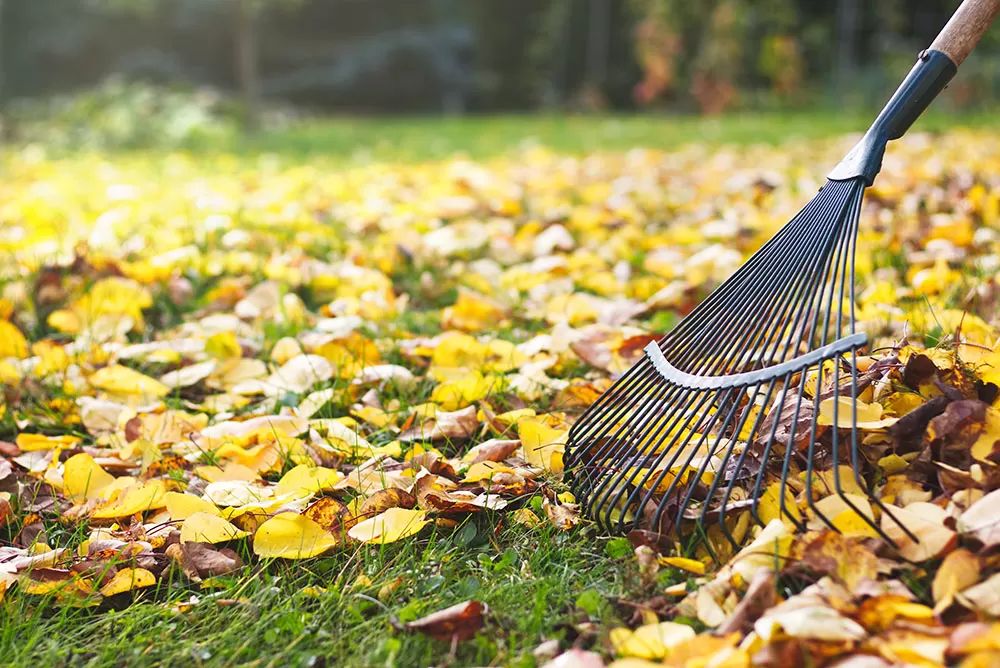
Should I Worry About the Black Spots on Maple Leaves?
Are you starting to notice black spots on maple leaves? Today, we will show you the main culprits behind this phenomenon and how homeowners can prevent it.
Maple trees are among the most common trees in Arizona, along with oaks, hickories, and plums. For this reason, it’s quite usual for homeowners to count on a maple tree in their backyard.
Whenever you notice that your maple tree starts presenting dark spots during the summer, it’s expected for you to start worrying. However, you’d be surprised that this event is much more common than what you imagine. Still, there are some things you can do when finding yourself in this situation.
So, we invite you to keep on reading to learn more about these black spots!
Why Does My Maple Tree Have Dark Spots on Its Leaves?

It’s normal to expect for your maple tree’s leaves to change of color from time to time. Whether it’s light green, yellow, orange, or red, leaves transition their colors according to the seasons.
However, black spots definitely aren’t part of a maple leaf’s natural color. So, does it mean that your tree is a goner whenever you start noticing them?
Believe it or not, most maple trees can start having black to brown spots on their leaves without being in danger. So, you can say that it isn’t a sign that you need to cut it down.
Whenever there are any black spots on maple leaves, then it probably means that your tree has the famous called Tar Spot disease. Maple tar spot, scientifically known as Rhytisma acerinum, is a fungal disease that makes tree leaves have these black patches. Other trees that are often affected by this disease include sycamores and box elders as well.
Infected leaves start by presenting small, yellow spots on them. These spots are about ⅛ inch in diameter. Yellow spots eventually become bigger over time, ending up turning darker and resembling black tar. These black spots can be up to ¾ inch in diameter.
Usually, spots start to become most visible around early summer. By mid-fall, most black spots reach their full size. In some cases, these patches can even start to have a grooved texture.
How to Treat and Prevent Black Spots on Maple Leaves
Luckily, maple tar disease doesn’t cause damage to the tree itself. In fact, their main target is only the maple’s leaves. So, you don’t need to worry too much about your maple tree.
However, these black spots on maple leaves can surely look awful on your tree. That’s why we’ll teach you which is the best way to prevent this sort of situation. That way, you can be sure that you won’t go through it ever again.
When it comes to treating and preventing black spots on maple leaves, there are three main things you can do. First, you must make sure to get rid of any moisture build-up. Then, remember to rake and eliminate all fallen maple leaves. Lastly, contact an expert to apply a fungicide.
Additionally, do NOT remove your maple tree’s leaves. It isn’t an effective technique to preventing this problem. You would ultimately end up wasting your time. Instead, allow the leaves to naturally fall off the tree.
Remove any Moisture Excess Near Your Maple Tree
As most common fungal tree diseases, maple tar spots can start to appear due to excess moisture in the environment. That’s why it’s always a good idea to keep away any standing water near your tree’s base.
Not only will you prevent black tar by doing so, but you’ll also keep other fatal fungi away as well. Some of these fungal diseases include needle cast, scab disease, and apple rust.
Be Sure to Rake and Destroy Any Fallen Leaves

If you’re looking to a definite way of getting rid of black tar for sure, then you shouldn’t neglect to rake your leaves. Although many homeowners rather just leave the leaves on the ground, this can often be a mistake.
When we leave leaves on the ground, there are two main things that happen. First, the soil beneath your tree doesn’t count on the correct aeration. This makes it’s more susceptible to moisture build-up. And, as we said earlier, we don’t want that.
Second, infected maple leaves can carry on fungal spores to next year’s blossom.
Maple tar spot disease life cycle consists of three main phases. Fungal spores first are spread by air throughout the land around your tree during springtime. Then, these spores start attacking the leaves, thus resulting in the yellow spots. Lastly, the leaves fall and can remain moist.
Just like moisture can bring any other tree fungi, it also aids it to endure winter by entering a dormant state. Therefore, tar spots can get to next year’s leaves, sprouting in spring when temperatures start to rise again.
For this reason, getting rid of all leaves under your tree is a must if you want to effectively avoid this issue. When disposing of them, you can either burn or bag them. That way, you can be sure that all fungal spores are taken care of. This is the best alternative if you count on other maple trees nearby.
In case there aren’t any other maple trees around the neighborhood, then you can also compost them. Fortunately, black tar only affects maples. So, composting the leaves can help maximize resources.
Call a Professional to Apply Fungicide to Your Tree

Lastly, in case you have a young maple tree, then you should definitely contact a professional. An expert arborist will help you apply a fungicide to your tree. In this way, you can be sure that every leaf on your maple tree will be treated properly.
We recommend applying fungicide to your maple trees whenever they’re still growing or if there’s a persistent problem. Also, keep in mind that it will be much easier and quicker to apply a fungicide to smaller and younger trees rather than mature ones. After all, taking care of a large tree can be a big task.
In most cases, a professional tree service company will apply triadimefon and mancozeb. Moreover, they will perform this treatment twice every one or two weeks.
So, there you have it! By knowing what these black spots on maple leaves are, it’s time for you to take action!



